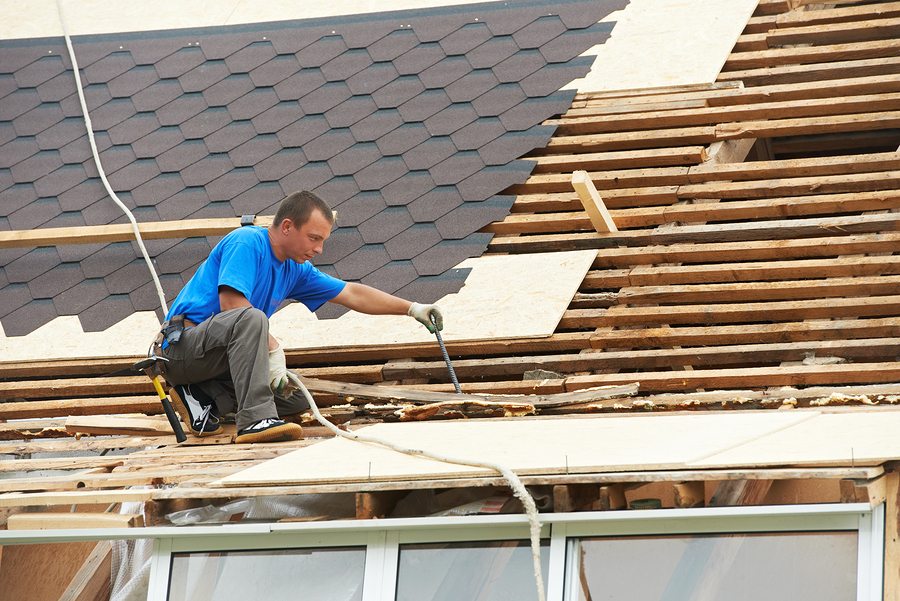Construction Industry Outlook After the Hurricanes: Expect Lasting Impact
December 6, 2017

The aftermath of this year’s hurricane season could dominate the construction industry outlook in 2018 and for years to come.
The combined damages from Hurricanes Harvey and Irma approach $200 billion, according to data from Moody’s Investors Service, and the massive rebuilding efforts are increasing demand for materials and labor nationwide.
What does the future hold for the industry after the devastating, historic effects of these recent storms? And what should construction industry leaders know moving forward?
Decreased Growth
Analysts had high hopes entering the year. The 2017 Construction Forecast Report by Oldcastle Building Solutions anticipated construction starts would increase by 4 percent overall in 2017, based on the expectation that federal fiscal policy would provide more momentum.
But the construction industry outlook had already altered, even before the hurricanes. The American Institute of Architects (AIA) said the “grounds of euphoria are evaporating” in its mid-year update in July. The AIA Consensus Construction Forecast panel predicted slower growth for the construction industry for the remainder of the year and throughout 2018.
The report included other important takeaways:
- Construction of industrial facilities was expected to rise. But the growth rate of retail, office space and hotel construction in 2018 was expected to be half of what was originally forecast in 2017.
- While growth wasn’t expected to turn negative, these predictions did mean some hot construction sectors could start cooling.
The AIA attributed this to a tapering growth rate in the U.S. economy, as well as construction industry concerns like the potential for rising interest rates, rising material costs and a tightening labor market.
Increased Demand
Recent disasters could produce ripple effects in construction markets across the country.
One likely scenario? A spike in demand for materials and labor in Florida and Texas will put a pinch on resources throughout the region. Construction companies throughout the Southeast are taking the storm’s effects on their material supply chains and labor pipelines into account.
Construction firms outside the region should put additional effort into retaining workers who may be tempted to head to the Southeast for higher wages and more hours.
The Associated General Contractors of America reported in August that seven of 10 contractors already had difficulty finding qualified workers. Specialists say an ongoing shortage in building materials from cuts in capacity dates to the financial crisis of 2008. The cost of construction materials actually rose 0.6 percent in August and 3.7 percent on an annual basis, according to a September report by Associated Builders and Contractors.
Arriving on the Scene
If your company has the mobility, you could find significant opportunities in the rebuilding.
It sometimes takes six months to a year for the full rebuilding efforts to kick into high gear. When they do, construction activity in the affected regions spikes in both commercial and non-commercial markets.
After big disasters like these, insurance proceeds, federal relief funds and private investment can fuel billions of dollars’ worth of construction in the following years. Cleaning up and rebuilding after hurricanes has become a lucrative business for many construction companies.
Michigan-based Belfor Holdings, Inc. said it soon expects to have more than 500 employees in Florida.
In New Orleans, the federal government is still funding billions in flood-control protection work 12 years after Hurricane Katrina. Construction companies also flocked to Galveston, Texas, after Hurricane Ike in 2008, and to New York and New Jersey after Hurricane Sandy in 2012.
To take part in the rebuilding, seek licenses in the affected states and counties in which you intend to operate. Create a plan for relocating and housing workers in the affected areas, as competition for skilled-trade workers will be stiff. Due to the lack of undamaged housing in disaster zones, construction companies often resort to housing workers in hotel rooms or trailers.
Summary
While 2018 is expected to show positive growth rates in many construction markets, recent disasters and economic trends could affect those expectations.
Demand for material and labor in the affected areas could affect the entire country. Construction firms outside the Southeast should be aware that workers might be tempted to go there for the increased opportunity.
Companies should consider heading to Texas and Florida if possible, since the post-storm work boom typically kicks off several months later and can last for years. Gain licenses in affected states and counties. Plan temporary housing for your workers.
More real estate content: Using the Internet of Things
Stay informed with Aprio.
Get industry news and leading insights delivered straight to your inbox.
